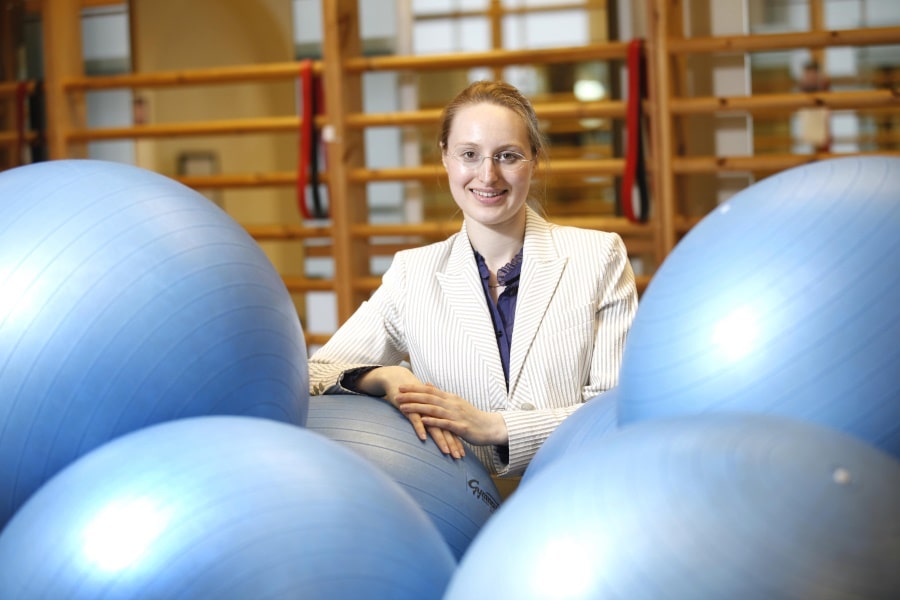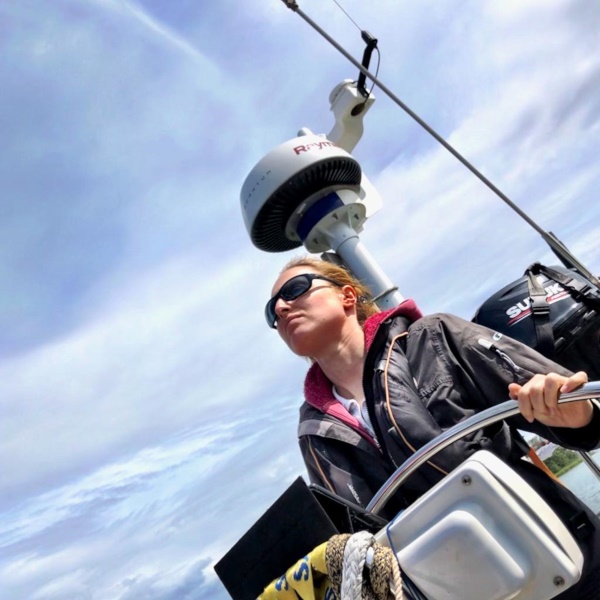
After our recent Q&A with Scoliosis SOS founder Erika Maude, we asked our followers on Facebook and Instagram what questions they wanted to ask Erika. We received a lot of suggestions – scroll down to read Erika’s responses to some of your scoliosis questions!
What happens if you leave adult scoliosis untreated?
(Kail Mursili via Facebook)
That depends on a number of factors. Age, curve size, symptoms, lifestyle…the list is endless. The general medical opinion is that if you go into adult life with a curve greater than 40 degrees, it is likely to progress by 1-2 degrees per year for the rest of your life.
However, some people’s curvatures will progress quickly due to lifestyle or career choices. Scoliosis is also likely to progress quickly during pregnancy or menopause, because of changes to hormonal balance, weight distribution on the spine and an increased risk of osteoporosis.
Prevention is always better, so if your condition is starting to bother you because of how it looks or any pain you may be experiencing, we would always recommend getting it checked out as there are lots of ways to help adults with scoliosis.
Can scoliosis improve with exercise and massage?
(Nafizah Bholah via Facebook)
Definitely! We have helped over 3,500 patients from all over the world to improve their scoliosis through scoliosis-specific exercise therapy. Our ScolioGold method combines scientifically-proven therapies with scoliosis-specific massage techniques to readdress muscle imbalances and give patients improved body image, Cobb angle reductions, relief from pain and a host of other benefits.
The important thing when choosing a treatment programme is to ensure that it is scoliosis-specific and customised to you; otherwise, it is unlikely to be effective.
What’s the largest degree of spinal curvature that can be fixed using exercises?
(Kail Mursili via Facebook)
As there is no cure for scoliosis, it all depends on your definition of ‘fixed’, as this can vary from person to person. We have had patients who arrived in wheelchairs and were able to walk some distance after treatment.
Some people are able to reduce their Cobb angle and avoid surgery. Others seek relief from a life of constant pain. Because scoliosis can affect individuals in so many different ways, treatment goals are very unique to that person.
We have successfully treated patients with a range of curve sizes. The most memorable is a gentleman who visited us from India with a 120-degree curve – he grew by 5cm during his treatment course.
Can conditioning and dance help to straighten the spine?
(@summergraceslate via Instagram)
General core strengthening and flexibility are key to good spinal health, regardless of whether someone has a spinal curvature. However, there has been no scientific evidence that conditioning, dance or routine physiotherapy can straighten the spine. Only scoliosis-specific exercises have shown to be effective in targeting the muscle imbalance in a way to make it possible to straighten the spine.
What can I do if I have a painful trapped nerve because of scoliosis?
(@Lindsey_bowler via Instagram)
In the first instance, we would recommend seeking medical help from your GP, in case the symptoms are actually pointing to something else.
After that, it is important to ascertain whether the nerve pain is due to being trapped by your vertebrae or by your soft tissues due to the muscle imbalance caused by your scoliosis. If it is the first, then you may need to be referred to seek specialist help; if it’s the latter, this will often resolve with a good scoliosis-specific exercise programme and hands-on release work.
At what age does it become impossible to resolve the deterioration of the spine?
(@Mouad_elkahlani via Instagram)
The simple answer is: there isn’t one! We have treated lots of patients well into their 90s with our scoliosis-specific exercise programmes, and as long as the patient is still relatively active and mobile, there is plenty our therapists can do to help.
Alternatively, if someone has lost their mobility, there are orthotic manufacturers who supply and fit custom-made Lycra suits that can help support the patient in a seated position.
Do you plan to open a clinic in New York? (Or any other places?)
(@mima.vojnovic via Instagram)
We are in the process of developing regional clinics to make treatment more accessible to people across the UK. Our first locations in Birmingham and Bristol opened at the end of November 2019, and we’re planning to add further locations in 2020.
Several people have asked us if we would consider opening clinics overseas; however, at the moment our focus is on maintaining the brilliant treatment standards for which we are famous, and any future expansion cannot be at the expense of quality control. Nevertheless, we are hopeful that these satellite clinics will prove that, regardless of the location, patients can expect to receive the same high level of care and expertise as they have come to expect from our London clinic.
Does playing the guitar affect scoliosis? What exercises should I do to compensate?
(@louise_wils via Instagram)
Any one-sided activity or hobby can cause the symptoms and/or curvature of existing scoliosis to worsen. The guitar does involve an element of twisting and overload on one side of the body, and therefore it could be a contributing factor to the progression of the condition.
Ideally, you want to be doing stretches and muscle strengthening in the exact opposite of your guitar-playing posture to negate any unwanted effects. As part of our treatment programme, we incorporate advice and exercises to counteract any one-sided hobbies / sports to ensure that all of our patients can continue to do the things they enjoy, whether that means getting back out into the garden or playing national-level tennis.
Are there spinal treatments for failed spinal tethering?
(rideoordie444 via Instagram)
The short answer is yes. However, it will very much depend on the individual case and presentation of scoliosis, plus the circumstances surrounding why the spinal tethering failed in the first place. The conventional treatment would be to do a full spinal fusion surgery; however, there are some instances where it may be possible to treat the issue with a scoliosis-specific exercise programme to avoid further surgery. The best advice would be to contact us for advice and to arrange a consultation.
Get in touch with Scoliosis SOS >>
The Scoliosis SOS Clinic was founded in 2006 by our Clinic Principal, Erika Maude. Erika opened the clinic because she herself had suffered from scoliosis since childhood and wanted to offer people an alternative to spinal fusion surgery.
Here, Erika answers some questions about her personal experience with scoliosis and her future plans for the clinic.

Can you tell us a bit about your experience with scoliosis?
My mother first noticed that something was wrong with my back when I was bending over one day. She took me along to our GP, who diagnosed me as having AIS (adolescent idiopathic scoliosis) but told us not to worry as I would likely “grow out of it”. Over the coming months, this didn’t happen, and after countless appointments back with the GP she finally convinced him that my condition was getting worse and to refer me to see an orthopaedic consultant.
The orthopaedic specialist took one look at my 34-degree curvature on an X-ray and pronounced me an immediate case for spinal fusion surgery. I eventually persuaded him to let me try the alternative: a Boston brace (hard plastic corset), worn for 23 hours per day between my 13th and 15th birthdays.
Unfortunately this didn’t work, and after 2 years my curve had progressed to 42 degrees. My consultant warned me that if I didn’t have surgery, I’d end up in a wheelchair.
What inspired you to set up the Scoliosis SOS clinic?
After that fatalistic prognosis from my orthopaedic consultant, my family set about finding an alternative, which eventually lead us to a tiny clinic in Spain where I went to receive treatment in 2003.
My inspiration to open the clinic came from a desire to keep people from having to go through the experience I had, and also to help the people who are failed by the lack of options available through the NHS. It is so empowering to see patients of all ages take control of their condition and care, and it’s wonderful that we’ve been able to help so many people from all over the world.
What advice would you give someone who has just been diagnosed with scoliosis?
Definitely act promptly! Never underestimate how aggressive scoliosis can be, particularly in children. My friend recently diagnosed her granddaughter with the help of our screening video (see below), which I’d shared on my Facebook page. It was great to see the family act so quickly to get her referred for an X-ray and get started with an exercise programme while they waited for an appointment with an orthopaedic specialist.
With adults it’s a little different, but depending on one’s lifestyle, symptoms can still develop or worsen rapidly – that’s often what has caused the condition to be noticed in the first place. Don’t suffer in silence; there are lots of support groups and sympathetic people you can talk to. Our patient care co-ordinators enjoy answering questions and offering advice to patients and their families following a recent diagnosis or hospital appointment.
What are your goals for the clinic over the next year?
We are in the process of developing regional clinics to make treatment more accessible to people across the UK. Our first locations in Birmingham and Bristol opened last month, and we’re planning to add further locations in early 2020.
What do you get up to when you’re not working?
I love being active, so after work, I’m often to be found at Pineapple Dance Studios learning a new routine – it’s a great way to forget the stresses of the day and really switch off. Such a diverse group of people attend my class, from semi-professional dancers to senior partners of City law firms; it’s a brilliant way to socialise and keep fit at the same time.
When I get a bit longer out of the office, I enjoy getting out on the water. A couple of years ago I sailed across the Atlantic, but usually, it is more coastal cruising, although recently I’ve really got into learning about celestial navigation…

If, like Erika, you’ve been diagnosed with scoliosis and it’s causing you distress, be sure to explore our exercise-based scoliosis treatment courses.
Our Treatment Methods Book a Consultation
